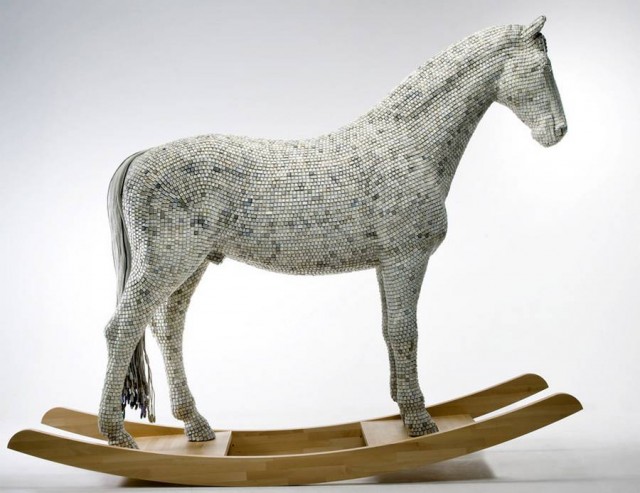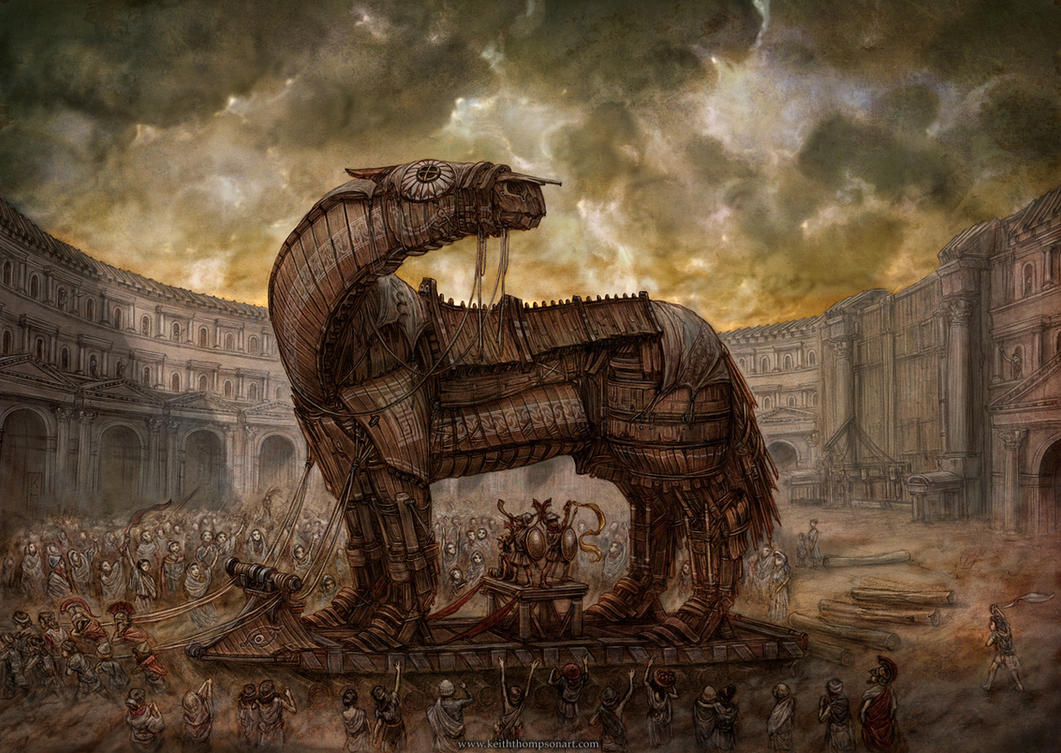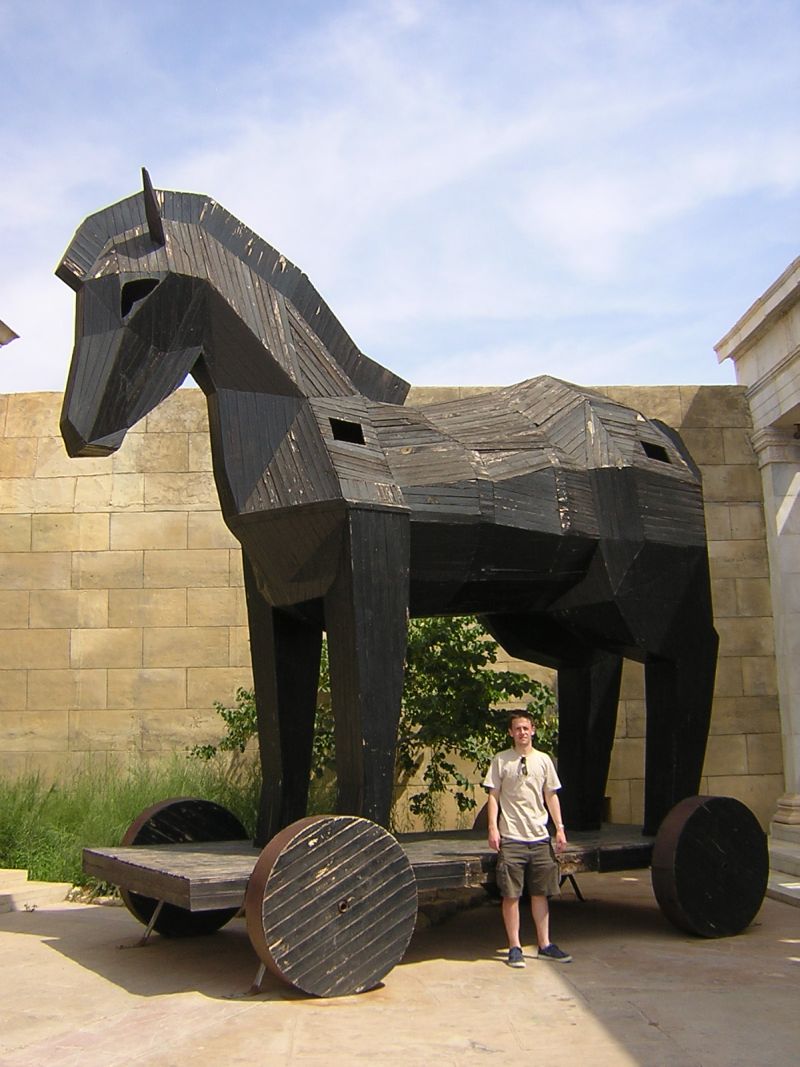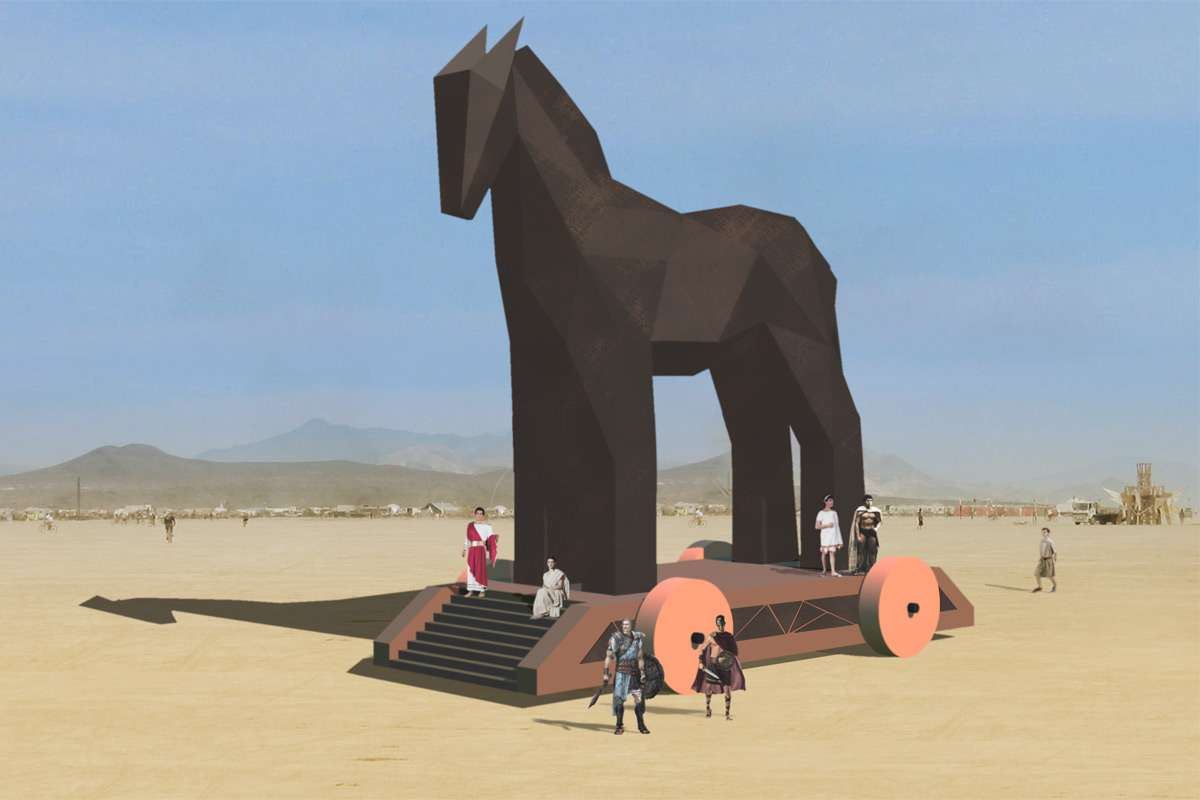Trojan Horse Pictures Biography
Source(Gogle.com.pk)According to classical sources, the war began after the abduction (or elopement) of Queen Helen of Sparta by the Trojan prince Paris. Helen's jilted husband Menelaus convinced his brother Agamemnon, king of Mycenae, to lead an expedition to retrieve her. Agamemnon was joined by the Greek heroes Achilles, Odysseus, Nestor and Ajax, and accompanied by a fleet of more than a thousand ships from throughout the Hellenic world. They crossed the Aegean Sea to Asia Minor to lay siege to Troy and demand Helen’s return by Priam, the Trojan king.
The siege, punctuated by battles and skirmishes including the storied deaths of the Trojan prince Hector and the nearly-invincible Achilles, lasted more than 10 years until the morning the Greek armies retreated from their camp, leaving a large wooden horse outside the gates of Troy. After much debate (and unheeded warnings by Priam’s daughter Cassandra), the Trojans pulled the mysterious gift into the city. When night fell, the horse opened up and a group of Greek warriors, led by Odysseus, climbed out and sacked the Troy from within.
After the Trojan defeat, the Greeks heroes slowly made their way home. Odysseus took 10 years to make the arduous and often-interrupted journey home to Ithaca recounted in the “Odyssey.” Helen, whose two successive Trojan husbands were killed during the war, returned to Sparta to reign with Menelaus. After his death, some sources say she was exiled to the island of Rhodes, where a vengeful war widow had her hanged.
The Trojan War Epics
Little is known about the historical Homer. Historians date the completion of the “Iliad” to about 750 B.C., and the “Odyssey” to about 725. Both began within the oral tradition, and were first transcribed decades or centuries after their composition. Many of the most familiar episodes of the war, from the abduction of Helen to the Trojan Horse and the sack of Troy, come from the so-called “Epic Cycle” of narratives assembled in the sixth century B.C. from older oral traditions.
In the first century B.C. the Roman poet Virgil composed the “Aeneid,” the third great classical epic inspired by the Trojan War. It follows a group of Trojans led by the hero Aeneas who leave their destroyed city to travel to Carthage before founding the city of Rome. Virgil’s aim was in part to give Rome’s first imperial dynasty an origin story as impressive as that of the Greeks.
History, Archaeology and the Trojan War
Many portions of the Trojan War epics are difficult to read historically. Several of the main characters are direct offspring of the Greek gods (Helen was fathered by Zeus, who disguised himself as a swan and raped her mother Leda), and much of the action is guided (or interfered with) by the various competing gods. Lengthy sieges were recorded in the era, but the strongest cities could only hold out for a few months, not 10 full years.
Major excavations at the site of Troy in 1870 under the direction of German archaeologist Heinrich Schliemann revealed a small citadel mound and layers of debris 25 meters deep. Later studies have document more than 46 building phases grouped into nine bands representing the site's inhabitation from 3,000 B.C. until its final abandonment in A.D. 1350. Recent excavations have shown an inhabited area 10 times the size of the citadel, making Troy a significant Bronze Age city. Layer VIIa of the excavations, dated to about 1180 B.C., reveals charred debris and scattered skeletons—evidence of a wartime destruction of the city that may have inspired portions of the story of the Trojan War. In Homer's daThe Trojan horse, Burial Pithos, c. 670 BC, Archaeological Museum of Mykonos, Greece
The Trojan Horse is part of the myth of the Trojan War, though it does not figure in the part of the war narrated in Homer's Iliad.
The Greek siege of Troy had lasted for ten years. The Greeks devised a new ruse - a giant hollow wooden horse. It was built by Epeius and filled with Greek warriors led by Odysseus. The rest of the Greek army appeared to leave whilst actually hiding behind Tenedos and the Trojans accepted the horse as a peace offering. A Greek spy, Sinon, convinced the Trojans the horse was a gift despite the warnings of Laocoon and Cassandra. Helen and Deiphobus even investigated the horse. The Trojans celebrated the raising of the siege hugely, and when the Greeks emerged from the horse the city was in a drunken stupor. The Greek warriors opened the city gates to allow the rest of the army access and the city was ruthlessly pillaged — all the men were killed and all the women and children taken into slavery.
The Trojan horse may or may not have been actually built and used. The only evidence we have are written sources.
There is a small museum founded in 1955 within the territories of ancient city Troy, near the Dardanelles (present-day Turkey). The museum includes the remnants of the city and a symbolic wooden horse built in the garden of the museum to depict the legendary Trojan horse. The wooden horse from the recent film Troy is displayed on the seafront in the nearby town of Çanakkale.
Heroes climbing out of the Trojan Horse (fragment, ca. 550 BC)
Based on this mythological episode, we get the term, Trojan horse, in which a supposed talent or apparent advantage is actually a curse, or "Trojan horse" tactics which are underhand. The term can also refer to a "sneak attack" in general. We also get the Latin phrase:
equo ne credite, Teucri!
Quidquid id est, timeo Danaos et dona ferentes
("don't trust the horse, Trojans! Whatever it is, I fear Greeks even when they are bringing gifts") spoken by Laocoon in Virgil's Aeneid which covers the siege of Troy in Book II. This has led to the modern saying "Beware of Greeks bearing gifts."
Greeks climbing out of the Trojan Horse
For the computing use of the term, see Trojan horse (computing).
The Trojan Horse (http://www.zoa.org/video2.htm) is a movie about the alleged PLO strategy in the course of Arab-Israeli conflict.
Indo-Greeks Trojan Horse
The Trojan Horse pulled into Troy, after a Roman wallpainting, on the wall a signal with a Torch sent to the Greeks, Hecuba probably praying to Athena.
Detail from "The Procession of the Trojan Horse in Troy" by Giovanni Tiepolo
19th century etching of the Trojan Horse
Trojan Horse reconstruction at the site of Troy
The wooden horse from the 2004 film Troy, exhibited at Çanakkale
Sinon with the Trojan horse and Trojans, minature of Virgilius Romanus. 500 AD Vatican
Trojan Horse, Lovis Corinth
Trojan Horse Pictures for Kids Black and White to Color Funny Hd Wallpapepr Images Pics
 Trojan Horse Pictures for Kids Black and White to Color Funny Hd Wallpapepr Images Pics
Trojan Horse Pictures for Kids Black and White to Color Funny Hd Wallpapepr Images Pics


Trojan Horse Pictures for Kids Black and White to Color Funny Hd Wallpapepr Images Pics

Trojan Horse Pictures for Kids Black and White to Color Funny Hd Wallpapepr Images Pics
Trojan Horse Pictures for Kids Black and White to Color Funny Hd Wallpapepr Images Pics
Trojan Horse Pictures for Kids Black and White to Color Funny Hd Wallpapepr Images Pics

Trojan Horse Pictures for Kids Black and White to Color Funny Hd Wallpapepr Images Pics

Trojan Horse Pictures for Kids Black and White to Color Funny Hd Wallpapepr Images Pics

Trojan Horse Pictures for Kids Black and White to Color Funny Hd Wallpapepr Images Pics
Trojan Horse Pictures for Kids Black and White to Color Funny Hd Wallpapepr Images Pics
Trojan Horse Pictures for Kids Black and White to Color Funny Hd Wallpapepr Images Pics

Trojan Horse Pictures for Kids Black and White to Color Funny Hd Wallpapepr Images Pics

Trojan Horse Pictures for Kids Black and White to Color Funny Hd Wallpapepr Images Pics
Trojan Horse Pictures for Kids Black and White to Color Funny Hd Wallpapepr Images Pics
Trojan Horse Pictures for Kids Black and White to Color Funny Hd Wallpapepr Images Pics

Trojan Horse Pictures for Kids Black and White to Color Funny Hd Wallpapepr Images Pics

No comments:
Post a Comment